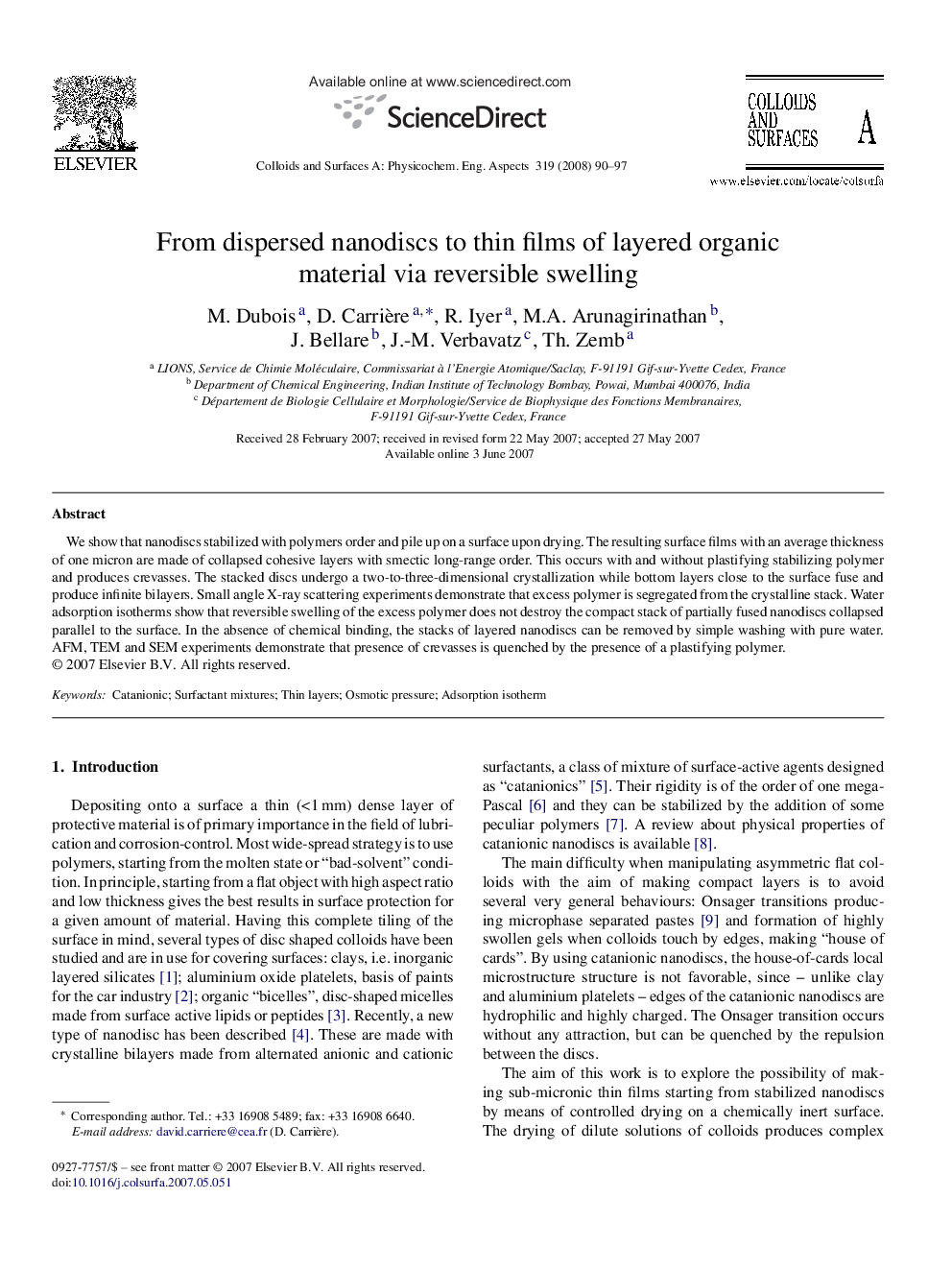| Article ID | Journal | Published Year | Pages | File Type |
|---|---|---|---|---|
| 596893 | Colloids and Surfaces A: Physicochemical and Engineering Aspects | 2008 | 8 Pages |
Abstract
We show that nanodiscs stabilized with polymers order and pile up on a surface upon drying. The resulting surface films with an average thickness of one micron are made of collapsed cohesive layers with smectic long-range order. This occurs with and without plastifying stabilizing polymer and produces crevasses. The stacked discs undergo a two-to-three-dimensional crystallization while bottom layers close to the surface fuse and produce infinite bilayers. Small angle X-ray scattering experiments demonstrate that excess polymer is segregated from the crystalline stack. Water adsorption isotherms show that reversible swelling of the excess polymer does not destroy the compact stack of partially fused nanodiscs collapsed parallel to the surface. In the absence of chemical binding, the stacks of layered nanodiscs can be removed by simple washing with pure water. AFM, TEM and SEM experiments demonstrate that presence of crevasses is quenched by the presence of a plastifying polymer.
Related Topics
Physical Sciences and Engineering
Chemical Engineering
Colloid and Surface Chemistry
Authors
M. Dubois, D. Carrière, R. Iyer, M.A. Arunagirinathan, J. Bellare, J.-M. Verbavatz, Th. Zemb,
